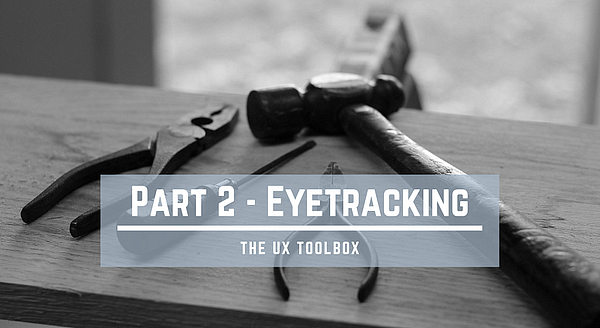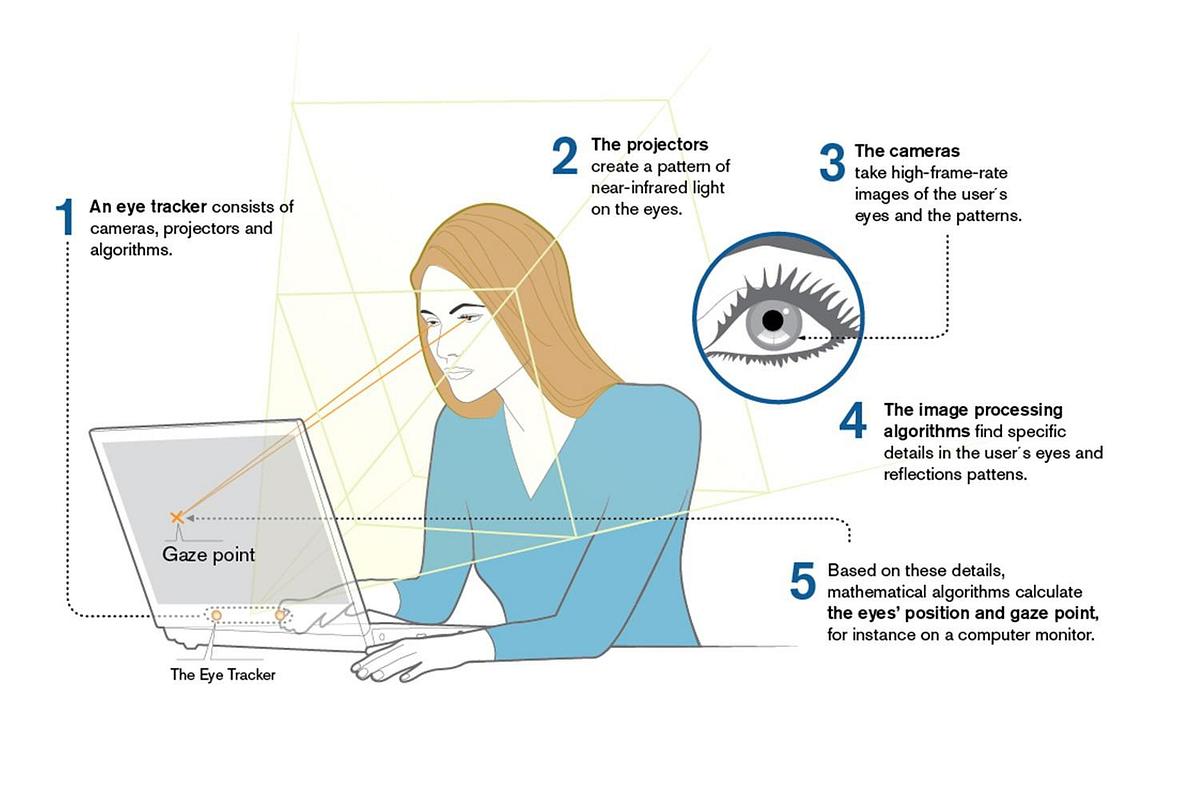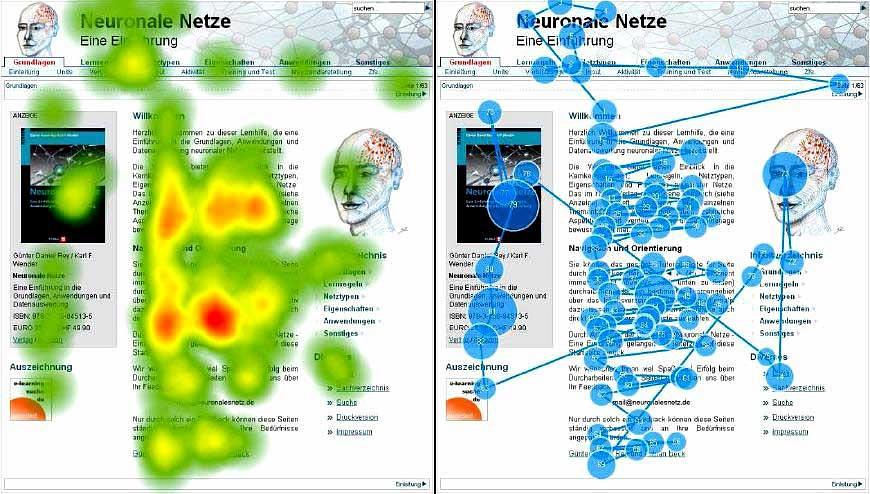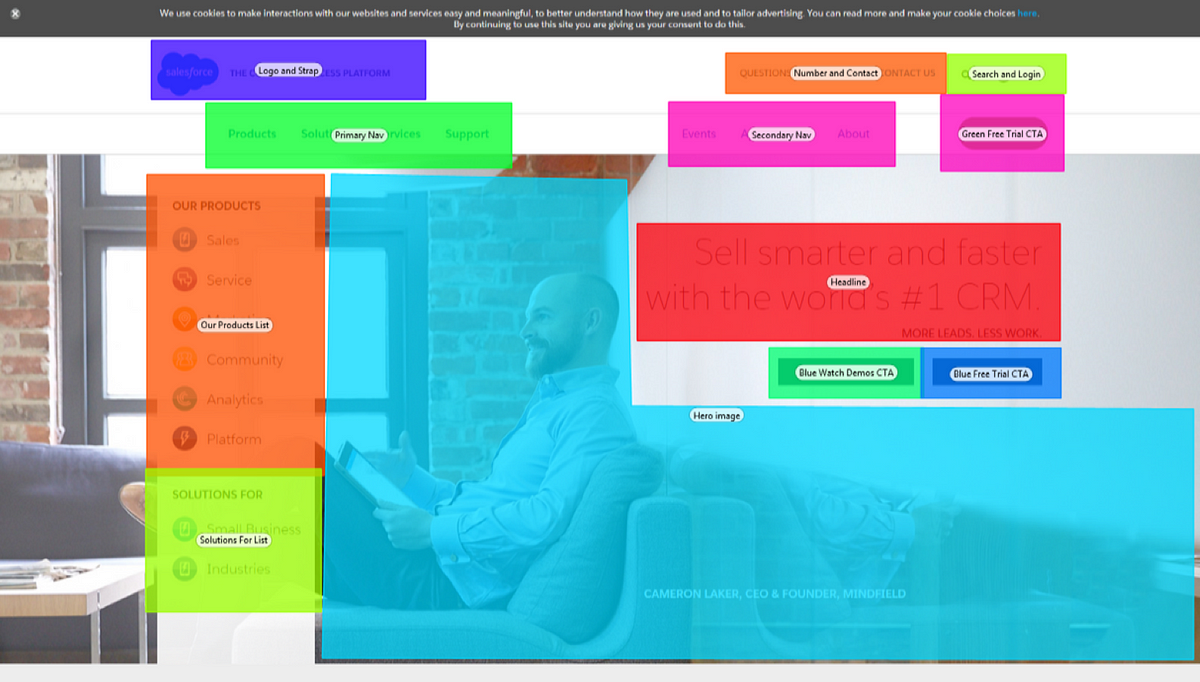The UX Toolbox - Eyetracking
26 April 2018 - Stephen Denning

Eyetracking is a methodology that helps researchers to understand visual attention. As a scientific research technique, eyetracking has actually been around since the early 1900s when Edmund Burke Huey began experimenting on eye movements by attaching rudimentary contact lenses to a series of pulleys and levers, that would manually draw participants’ eye movements onto a drum of paper! The technology today is far less intrusive and makes use of high-speed cameras built into monitor-based units or wearable glasses, which monitor eye-movements.
What can eyetracking tell us?
Eyetracking technology can tell us what people are looking at, how long they look at it for, and the path that their eyes take. As researchers, this data can then be analysed and interpreted to reveal:
- Which visual content attracts attention
- How quickly visual content is noticed
- Which visual content is ignored or overlooked
- In which order the visual elements are noticed
- How one visual layout compares with another
It is important to note that, on its own, eye-tracking it not going to tell us:
- If somebody finds a product engaging or useful
- If something is easy to use or understand
- If a design is liked or disliked
- If a customer is more/less likely to convert
- Why people are looking at what they are looking at!
This is why, for the purposes of UX research, it is important to combine eyetracking with other qualitative techniques, in order to form a rounded picture of the user’s experience.
How does it work?

Eyetracking works by using a series of cameras to pick up near-infrared light that is reflected off the participants’ eyes. Using various algorithms, the eyetracking software translates these images into a specific position of focus on the screen. Eyetracking can be conducted on screen-based stimuli such as websites, physical stimuli like documents or print advertising, or environmental stimuli such as shelving or signage (using eyetracking glasses).
When eyetracking studies are conducted participants are usually left to view the stimulus in silence, as asking the participant to talk (for example using the think-aloud protocol utilised in usability testing) will slow down or otherwise alter then natural visual flow.
The data from eyetracking is then aggregated across all the participants and can be visualised as heat-maps (the areas of the page that received greater attention appear ‘hotter’) and gaze trails (showing the path and durations of focus for all the participants).

What is arguably more powerful however, is using the vast amounts of data captured to analyse the visibility of certain elements of the page, or to compare elements.

By highlighting the ‘areas of interest’ we can use the data to understand aspects such as:
- How long did it take people to notice an element?
- In what order were the elements noticed?
- How much time did they spend looking at an element?
- How much time was there between the element first being seen and it being clicked on?
Analysing the data in this way provides us with very rich insights, based on robust scientific data, that can help us to answer very specific research questions that we may have. See our case study for Visit Scotland for an innovative way we worked with their Visitor Centres to assess effectiveness in flows around the centre and placement of marketing literature.
To find out more about how eyetracking could help you to see through the eyes of your users, get in touch.
Credits: Eye Tracking in User Experience Design (Romano Bergstrom & Schall), Tobii AB
You might also be interested in...
Bridging Business Analysis and User Experience: Achieve Outstanding Digital Results
24 November 2025Discover how aligning Business Analysis and User Experience transforms digital projects - boosting efficiency, user satisfaction, and ROI for organisations seeking exceptional results in today’s competitive market.
Read the article: Bridging Business Analysis and User Experience: Achieve Outstanding Digital ResultsMaking Hospitality Welcoming for All: A Digital Accessibility Guide for Hotels
21 November 2025Hotels have long focused on physical accessibility, but true inclusion extends online. This practical guide explains how to make your hotel website accessible for all guests—meeting global WCAG and EAA standards, expanding your reach, and creating a seamless booking experience for every visitor.
Read the article: Making Hospitality Welcoming for All: A Digital Accessibility Guide for Hotels3 perspectives on how AI is shaping inclusive digital experiences
10 November 2025AI is transforming digital accessibility — empowering disabled users, enhancing how we evaluate digital experiences, and reshaping how inclusive products are designed. This article explores three key perspectives and highlights how AI can support more equitable, human-centred digital experiences when used thoughtfully and collaboratively.
Read the article: 3 perspectives on how AI is shaping inclusive digital experiences